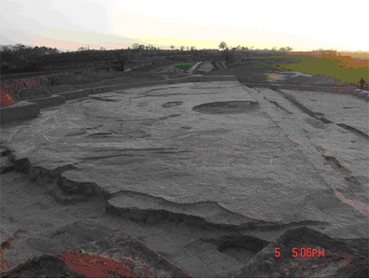Ancient Observatories Around the World
- April 1, 2014
- By KIDS DISCOVER
People have always loved staring up at the sky. Just look at how many ancient astronomical observatories have been found, and how far back they date. Typically used for keeping track of the agricultural calendar, these structures were often important sites for worship (which often included human sacrifice). Here’s a quick look at three recently discovered ancient observatories, plus the most famous one.
• You’ve probably heard of Stonehenge, a mysterious site in Wiltshire, England, that dates back about 5,000 years. While it may be the best known ancient observatory, no one knows just what it was used for — though it’s been called a place to mark the winter solstice, a burial ground, and a temple. Another big question: How did its huge stones (some weigh four tons and others up to 25 tons) get there, since they came from up to 156 miles away? Hmmm.
• In 2002, a site was found near the small town of Goseck, Germany, and promptly hailed as Western Europe’s oldest observatory. The layout indicates it was used to chart the sun’s movements, and cut marks on human bones found there indicate that it also hosted sacrifices. Carbon dating of artifacts shows the Goseck site was built between the Stone and Bronze Ages, which would make it about 7,000 years old — and an important site for some of Europe’s earliest farmers.
• In 2005, scientists discovered the remains of an observatory outside the city of Linfen in northern China. They said the platform, which is surrounded by 13 columns and may have been used to track the sun’s movement throughout the year, was more than 4,000 years old. It too was used for sacrificial rites.
• In 2006, scientists in Peru announced they’d found an even older observatory just a few miles north of Lima, that country’s capital. Dating back 4,200 years, it predates the well-known Inca culture by thousands of years. The site is also remarkable for its intricate carvings, many of which line up with important events that still make sense with the agricultural calendar. These details survived because the site was buried deep in the Earth and never damaged by treasure-hunters.
Similar ancient observatories have been found in Armenia, Egypt, Malta, Mexico, Scotland, Turkey, and elsewhere. These days, it’s often hard to see the night sky (and human sacrifice is way less popular), but these mysterious sites continue to capture our imaginations.



